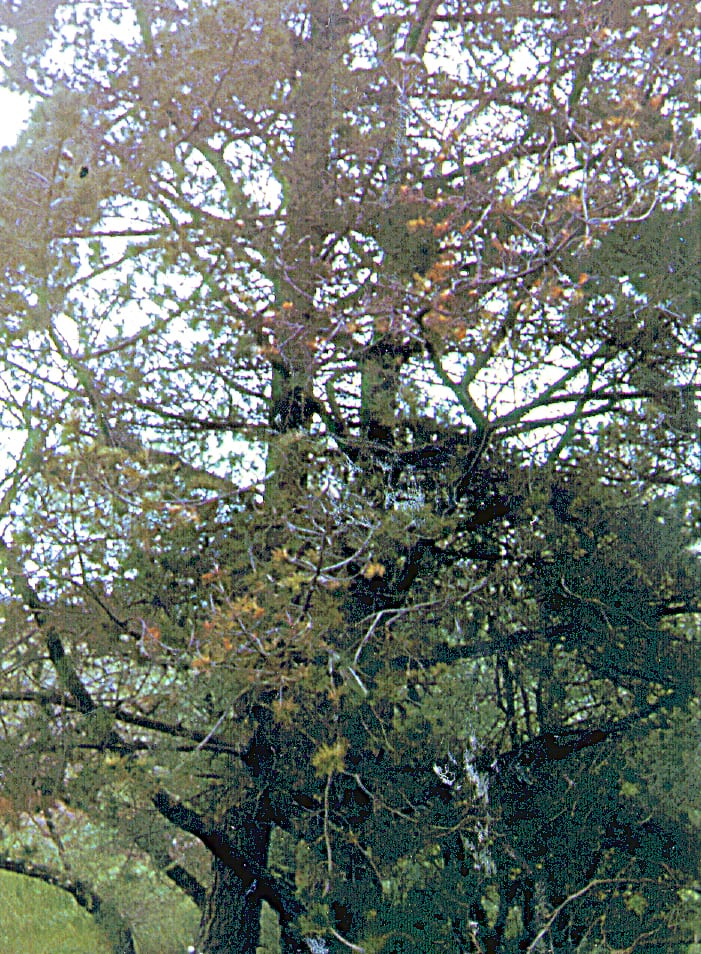Blight
Sphaeropsis sapinea (Diplodia pinea) (fungus)
Found on Austrian, ponderosa, and Scots pines most susceptible. Other pines less susceptible. Other conifers: deodar cedar, fir, eastern larch, hoop pine (Araucaria cunninghamii); Colorado blue, Norway, and white spruce and worldwide. Most severe on trees out of range.
Contributing to infections are drought, soil compaction, root damage, excess shade or heat, urban heat reflection (disease rare in normal forest conditions), Favorable temperature 82∞ F.
Exudation of resin drop from growing tip. Buds stunted during needle elongation; needles yellow-green to straw color. Tissues in elongating lesions water soaked, dark red-brown, exuding resin. Resin hardens, making tips hard and brittle. Repeated annual infections deform crown. In severe cases pycnidia evident beneath bark scales as black pads with gray mycelium. In second year of development, infected cone scales are covered with black pycnidia.
Dark brown conidia, appearing as brown specks at tips of pycnidia under needle sheaths, are splashed around by rains from early spring to late fall and enter directly into needle and bud tissues to create new infections. Lesions around infection sites grow rapidly into twigs below the needles for about 3 weeks in the spring when the buds elongate. Resin exudes from lesions, buds, or elongating twigs and needles die. Resin oozes around the affected area. Wounding by spittlebug or nodule moth creates sites for spores and development of larger resinous cankers on stems or larger branches, resulting in severe damage. Cones invaded by spores when buds develop pycnidia, and conidia the second year, are responsible for copious spore showers.


